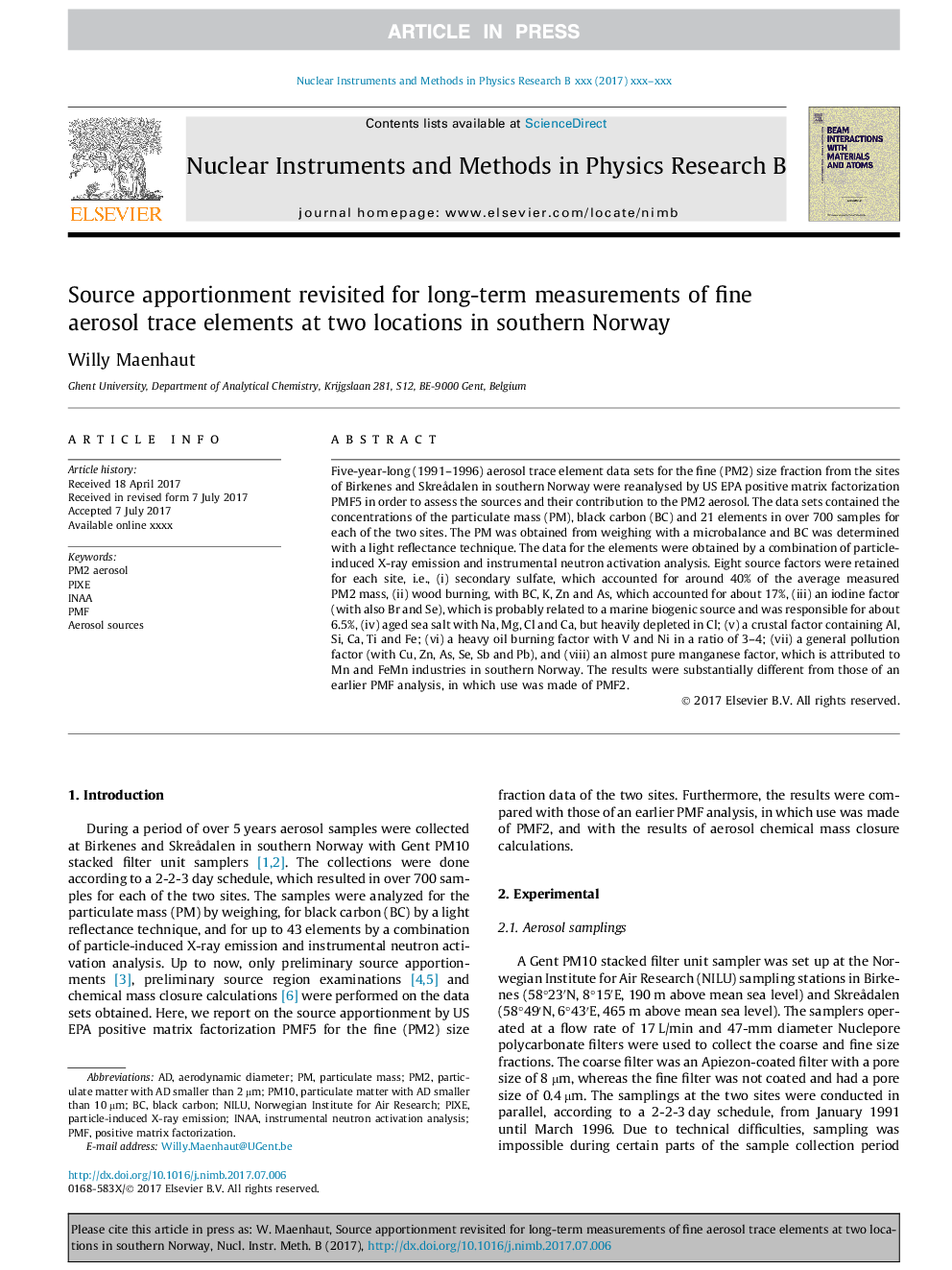| Article ID | Journal | Published Year | Pages | File Type |
|---|---|---|---|---|
| 8039391 | Nuclear Instruments and Methods in Physics Research Section B: Beam Interactions with Materials and Atoms | 2018 | 6 Pages |
Abstract
Five-year-long (1991-1996) aerosol trace element data sets for the fine (PM2) size fraction from the sites of Birkenes and Skreådalen in southern Norway were reanalysed by US EPA positive matrix factorization PMF5 in order to assess the sources and their contribution to the PM2 aerosol. The data sets contained the concentrations of the particulate mass (PM), black carbon (BC) and 21 elements in over 700 samples for each of the two sites. The PM was obtained from weighing with a microbalance and BC was determined with a light reflectance technique. The data for the elements were obtained by a combination of particle-induced X-ray emission and instrumental neutron activation analysis. Eight source factors were retained for each site, i.e., (i) secondary sulfate, which accounted for around 40% of the average measured PM2 mass, (ii) wood burning, with BC, K, Zn and As, which accounted for about 17%, (iii) an iodine factor (with also Br and Se), which is probably related to a marine biogenic source and was responsible for about 6.5%, (iv) aged sea salt with Na, Mg, Cl and Ca, but heavily depleted in Cl; (v) a crustal factor containing Al, Si, Ca, Ti and Fe; (vi) a heavy oil burning factor with V and Ni in a ratio of 3-4; (vii) a general pollution factor (with Cu, Zn, As, Se, Sb and Pb), and (viii) an almost pure manganese factor, which is attributed to Mn and FeMn industries in southern Norway. The results were substantially different from those of an earlier PMF analysis, in which use was made of PMF2.
Keywords
Related Topics
Physical Sciences and Engineering
Materials Science
Surfaces, Coatings and Films
Authors
Willy Maenhaut,
